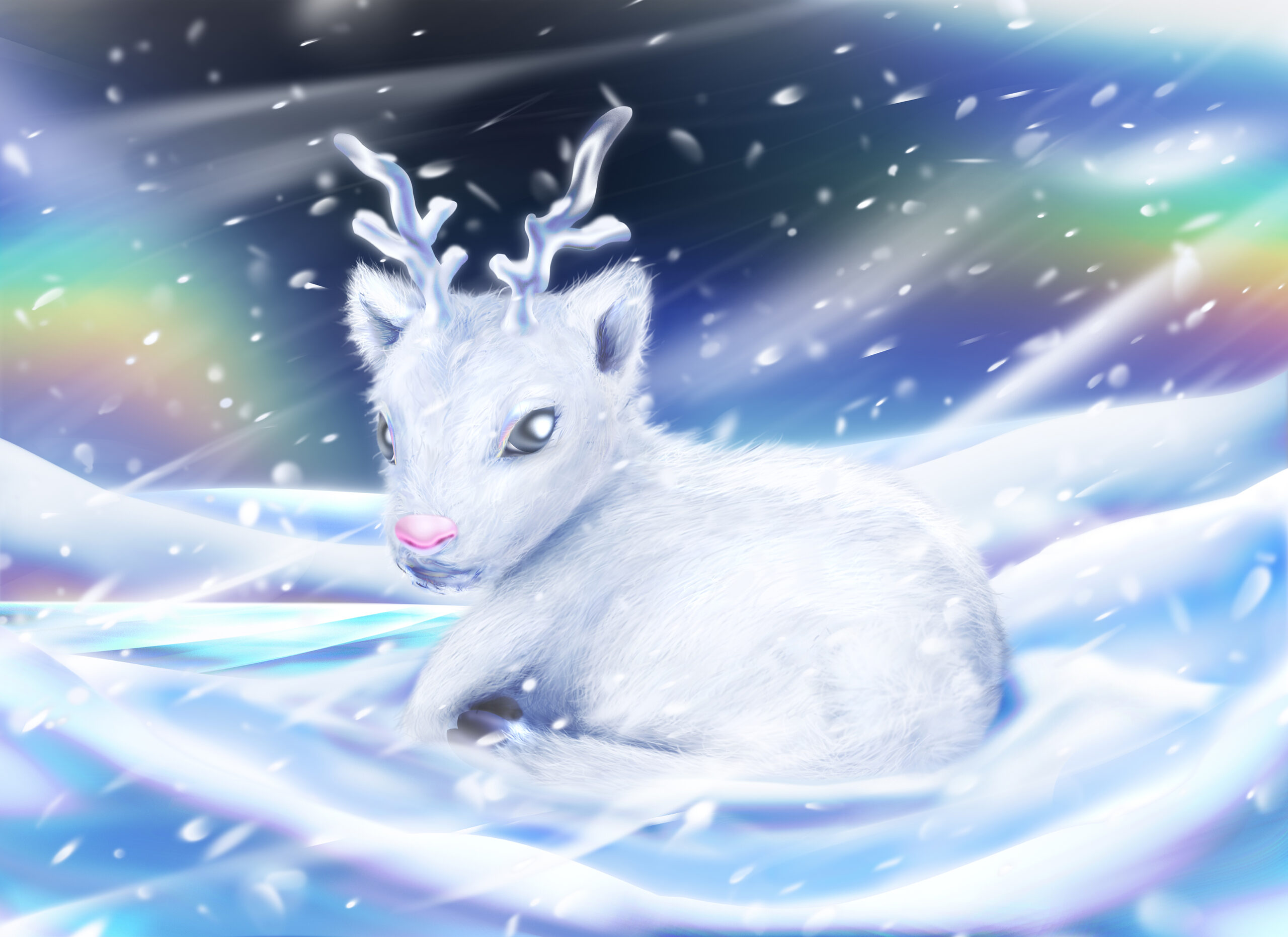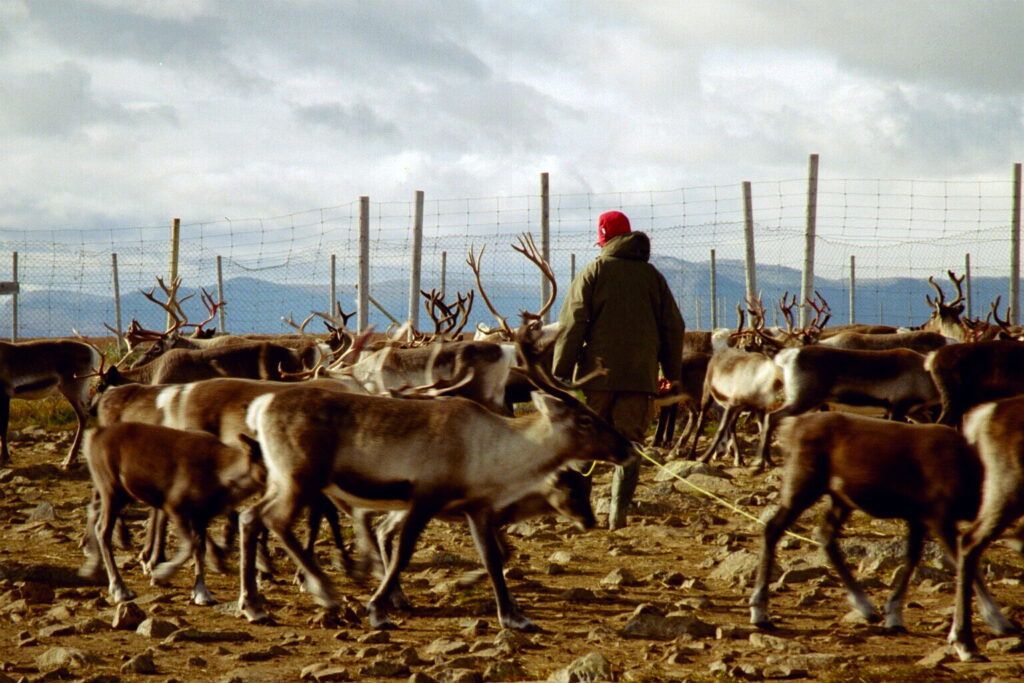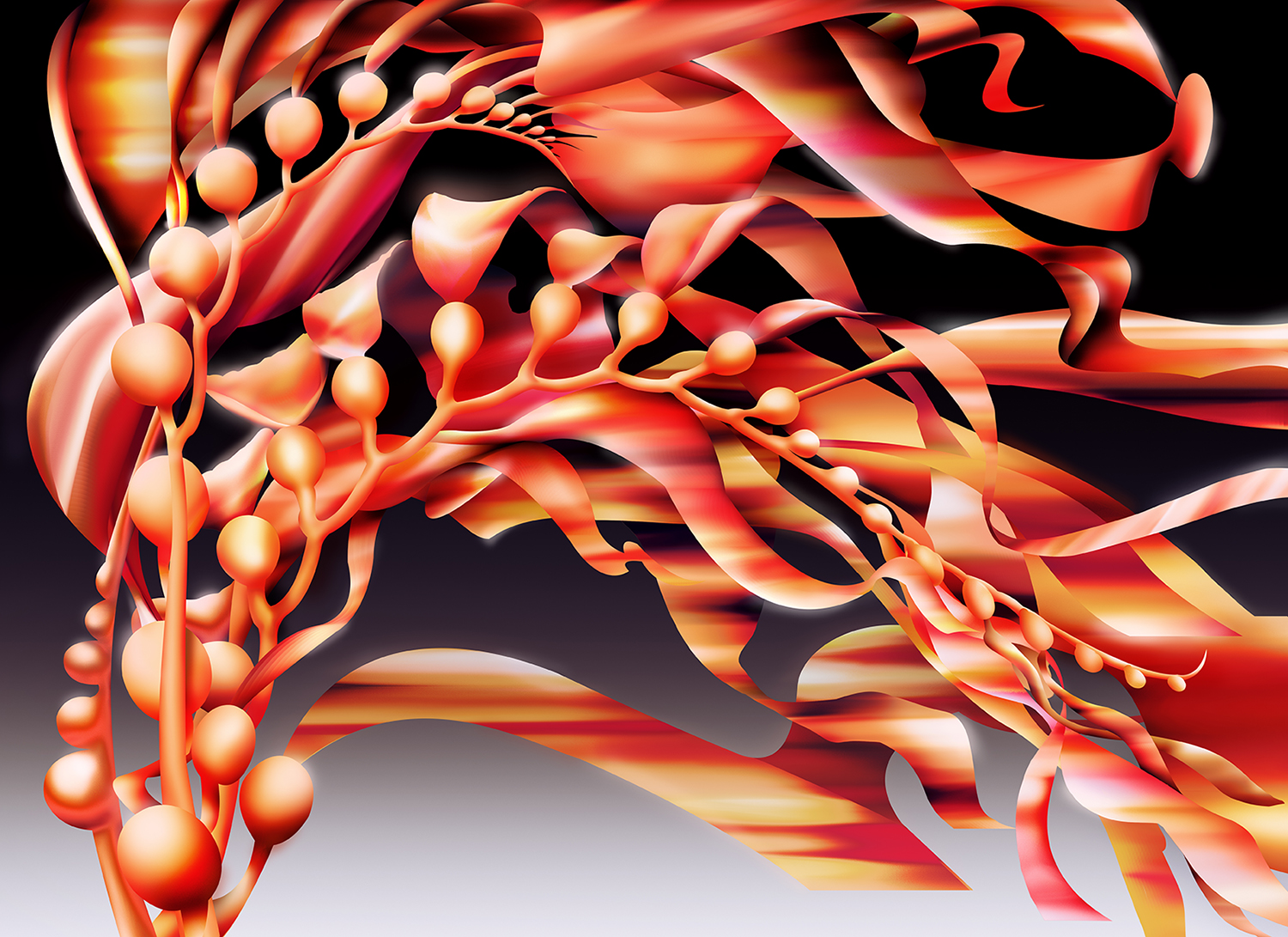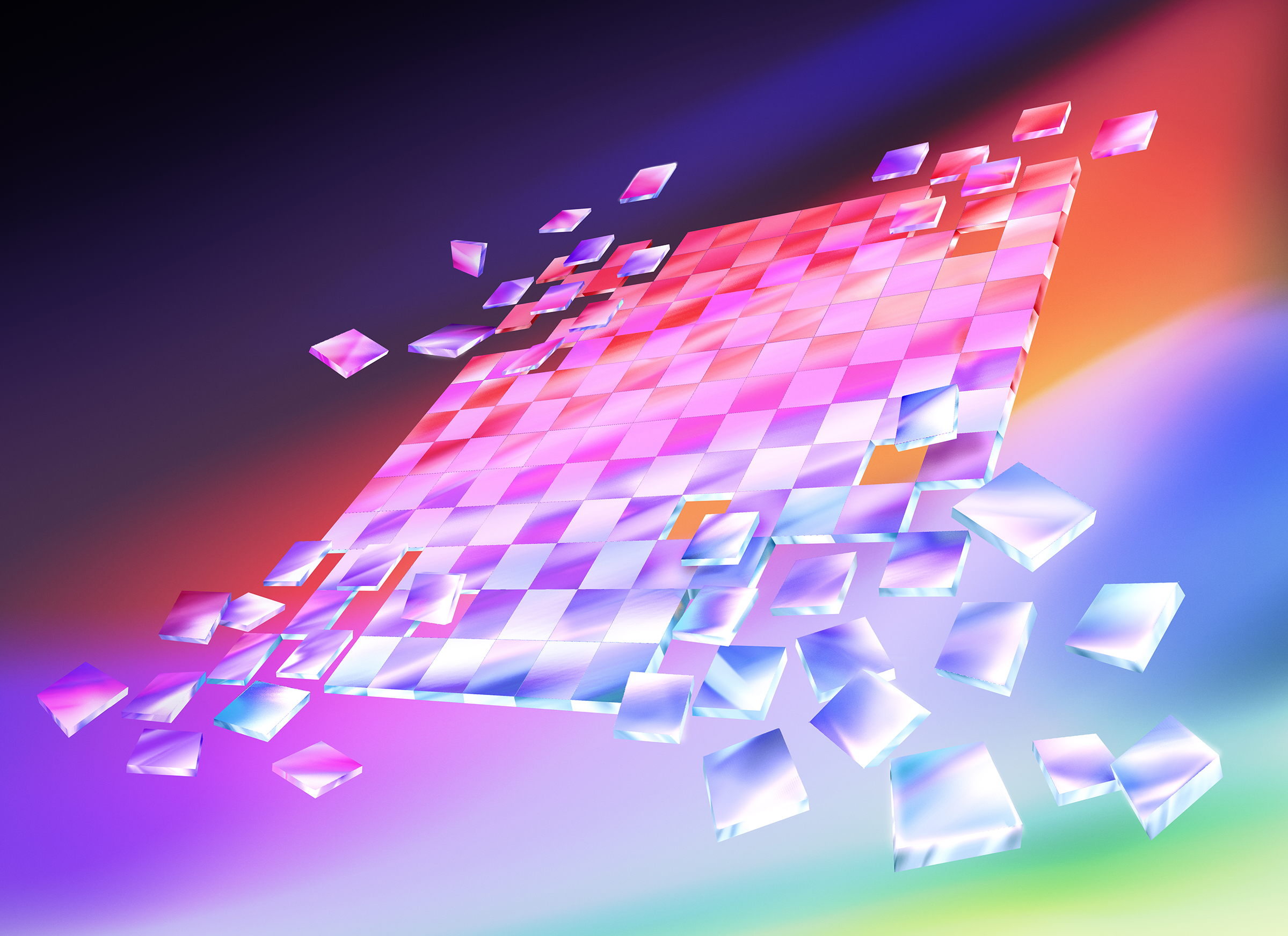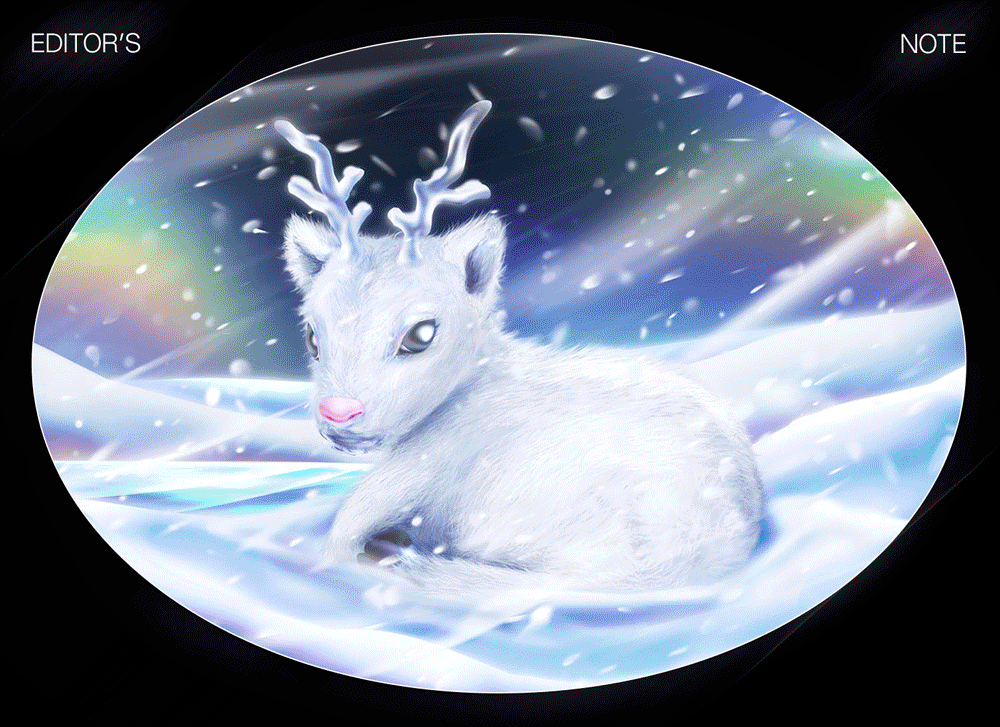MOLD’s series on Nightlife explores the rhythms, metabolisms and revelations that flourish best in the dark.
In Sápmi, a region inhabited by the indigenous Sámi that covers areas of north Sweden, Norway, Finland, and Russia, the temperatures and the distribution of light through the summer and winter seasons is extreme. In summer, there is the lingering midnight sun, and in the winter: darkness through day and night. Living in these conditions as the seasonal norms, sophisticated approaches to foraging, fishing, and hunting are all practised by Sámi communities (most of which are regenerative by design) but one of the most unique socio-ecological systems of food production is realised through a collaborative relationship with lichen and reindeer. Many communities are dependent on living nomadically with the migrating reindeer, and in the darkest days of winter, the reindeer are led by Sámi herders to graze on extremophilic lichens which proliferate across trees, rock, and soil even in subzero darkness.
These enduring local and regenerative food systems of the Sámi have, unsurprisingly, caught the attention of organizations like the UN that are strategizing for global food sustainability in the face of the climate crisis. Designing low-carbon, locally-sourced approaches certainly brings food systems closer to some form of sustainability, and it is critical not to overlook how systems like the Sámi’s multispecies relationships figure into these food production practices. Rather than just human- or even reindeer-centered systems, the multispecies network that these food systems rely on reveal a larger socio-ecological imperative. Still, the long winter nights of Sápmi may offer designers and those looking to develop new food systems a way of thinking about the climate crisis which—in addition to the pandemic and labor conflicts—is creating new extremes all over the world by continuing to destablize already precarious and unjust food systems. The heavy demands of these conditions continue to prove too complex for even the sleepless and sprawling supply chains, but multispecies care and designing more-than-human systems may offer more enduring and less destructive ways of food production as the night grows darker.
Grasping in the dark is a lot easier when you are familiar with your surroundings.
For many traditional design methodologies, regarding your setting—or better yet, an ecosystem, may be regarded as unnecessary. In fact, acknowledging such would be in opposition to popular universal design methodologies which are supplemented by the heavy implication that natural resources are plentiful (if not unlimited) to all spaces and people. Nonetheless, there are many programs and designers who are working to illuminate local species and systems in different regions. In Malmö, Sweden, from where I am writing and where the nights of winter can be long and dark even a thousand kilometres south of Sápmi, Agata Bielska’s Meadow Lab, introduces people in the city to multispecies collaborative food-preparation techniques while also walking people through the living landscape of a city that is frequently changing. While Bielska leads fermenting and tempeh workshops, she employs cooking with different city plants as a way of knowing the ecosystem. Foraging oyster mushrooms or dandelion root, or growing mycelium in the dark winter days are small but important aspects of knowing local ecosystems.
The workshops that Meadow Labs facilitates a form of bioregionalism—a way of mapping spaces with other species—that allows people living in the city to listen and look for other species living in the otherwise human- dominated urban setting. Broader local programs like Mycologos, can offer similar approaches to foraging and getting to know the multitudes of species around you. Beginning to design more-than-human ways of eating and producing food is linked to this bioregionalism that can quickly be illuminated by listening to, and looking for, or even eating the species in your community
To design with or even beginning to see other species can illuminate new worlds.
The Sámi year is composed of eight seasons, that all correspond to the movement and life cycle of reindeer, in the winter the stomach chemistry of the reindeer changes so that they can eat and digest lichen—initiating migration. This metabolic and seasonal calendar is the design of a centuries-long collaboration between species. “In trying to imagine a world where humans and other animals live together differently, seems easier to critique the present, complicate our relations, or produce more theory, rather than negotiate other possibilities.” Writes scholar Michelle Westerlaken in her thesis, Imagining Multispecies Worlds, which serves as a study in multispecies collaboration and design. “The involvement of other animals in negotiating possibilities (who have historically been excluded from this process) requires us to pay more attention to the way other animals take part in this open-ended process. To clarify this design position and to make space for other animals to participate,” writes Westerlaken.
Here in Malmö, projects from Un/making Studio have done work to open up the design process to this negotiation. As a 2016 project reflects where they invited participants of their Plastic Imaginaries project to live with mealworms in their kitchen. The mealworms, have been found to have the ability to eat and digest styrofoam—an icon of the Anthropocene— eat discarded styrofoam and subsequently were eaten themselves. The project demonstrates this negotiation of design that Westerlaken suggests. “Rather than theorizing the eating with micro-ontologies, or claiming circularity in abstraction, this actual provocation allows both humans and other animals to respond to entanglements that arise in consuming each other.”
For human or animal or microbe or fungi, there is diminishing certainty that the sun will rise at the end of the night.
As a flood in Vancouver may lead to global potato shortage may remind us of the faltering of global food systems that are made to be brittle and break under strain. Under stable climate conditions, the challenge of designing a food system to feed an apartment complex or a mountain village, requires the possibility of friction and trouble. While the climate crisis and the loss of species are both indicators of the urgent need to design new food systems, to look beyond the global industrial food networks of the Anthropocene, the growing and compounding nature of the crisis also renders all design and the possibility of new multispecies systems precarious.
The arctic is heating at four times the rate of the rest of the world and for the Sámi, ways of living that endured for thousands of years are being shaken by climate change. Now, in the winter, as reindeer travel to seek out the lichen they rely on for food in the otherwise scarce season, they are now finding it over-saturated with water and less nutritious, or unaccessible beneath thick ice—or the unseasonably thick snowfall has masked the scent of the lichen completely making them impossible to find. Mining, and other land-use practices have long challenged indigenous communities living in Sapmi, but now the climate is further complicating these ways of living that the UN has lauded as exemplary in designing our future food systems.
Still Sámi communities, through the night and day, continue to adapt and struggle. It seems a distant fantasy that anything on this planet could live totally isolated from the impact of human infrastructures—and as we design for a more-than-human future we will almost always face the impediments that anthropocentric design continues to produce. But when the night comes, there is little doubt that we are far more likely to endure the uncertainty it brings if we live and collaborate alongside the creatures we share the darkness with.
